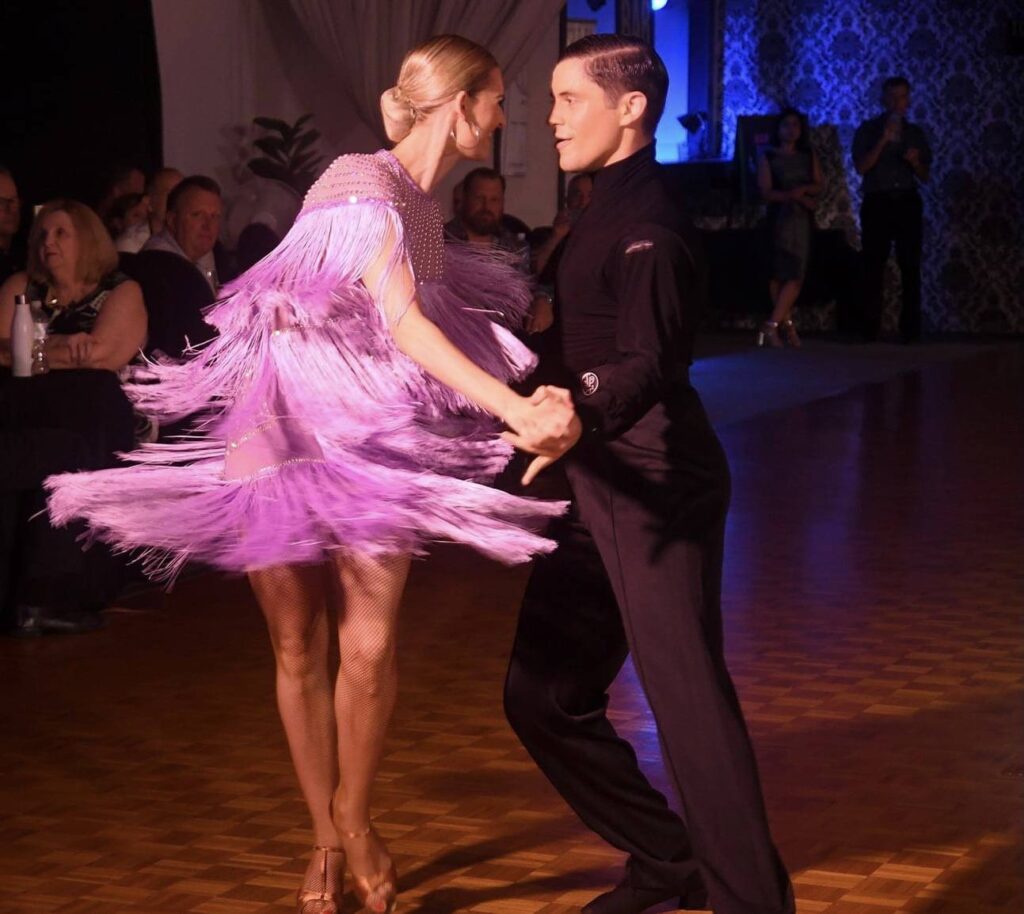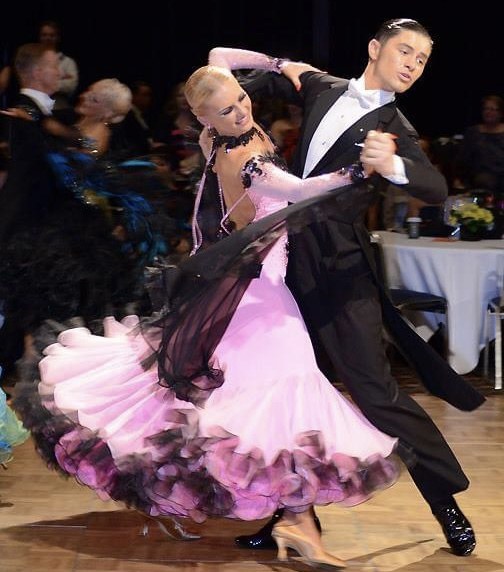Both Jack and Joanne have dedicated their lives to the pursuit of competitive Ballroom Dancing. But what is Ballroom Dancing? How did it start and where is it going in the future?
Ballroom Dancing can trace its origins to the European continent, in particular the United Kingdom. Dancing with a partner, accompanied the by popular music of the many band leaders of the late 1800’s and early 1900’s was an extremely popular past time, especially among the upper echelons of society.
Gradually as dances such as the Waltz and Foxtrot became more popular dancers began to organise competitions to establish leaders in the world of Ballroom Dancing.
As people began to travel around the world more frequently and further distances dancers became exposed rhythms and dances from around the world. This was particularly the case with the dances from Cuba and Latin-America such as the Rumba, Cha Cha Cha and Samba and as a result Latin American style competitions started to become popular in the 1950’s.
There is a rich a history of Ballroom Dancing in Australia, particularly Perth, probably as a result of Australia’s strong cultural ties to the United Kingdom during the 1900’s. Perth’s famous dance halls such as Gilkison’s, Wrightson’s and the Canterbury Court Ballroom were the places to be on a night out in mid to late 20th century, and the activity of going out for a social dance remains popular today.
Competitive Ballroom Dancing (sometimes known as DanceSport) is compromised of three dancing styles in Australia, these are Ballroom, Latin-American and New Vogue.
The Ballroom style consists of 5 dances, these being Waltz, Tango, Viennese Waltz, Slow Foxtrot & Quickstep
The Latin American style also covers 5 dancers; the Cha Cha Cha, Samba, Rumba, Paso Doble & Jive.
New Vogue is a style of sequence Ballroom Dancing, only found in Australia and New Zealand. These were dances extremely popular at social dances due to the fact that everyone at the dance would perform the same sequence, making it easier to dance with a stranger comfortably. Although there are countless New Vogue sequences, only 15 of these dances have been accepted by the governing bodies to be used in competition.
Both the Ballroom and Latin American styles are Internationally standardised and high level Australian dancers often compete at international competitions around the world in these two styles.
Today people find enjoyment through Ballroom Dancing in many different ways. Social dancing still remains extremely popular today and many people take lessons in order to improve the comfort and ease with which they move at social dances. Others who wish for a greater challenge undertake medal examinations, which are structured exams, conducted with a teacher, where your skills in performing the basic movements of Ballroom Dancing are assessed. Lastly competition Ballroom Dancing is extremely popular and international Ballroom Dancing competitions grow every year as there popularity expands into new areas of the world such as Asia and the Middle-East.

